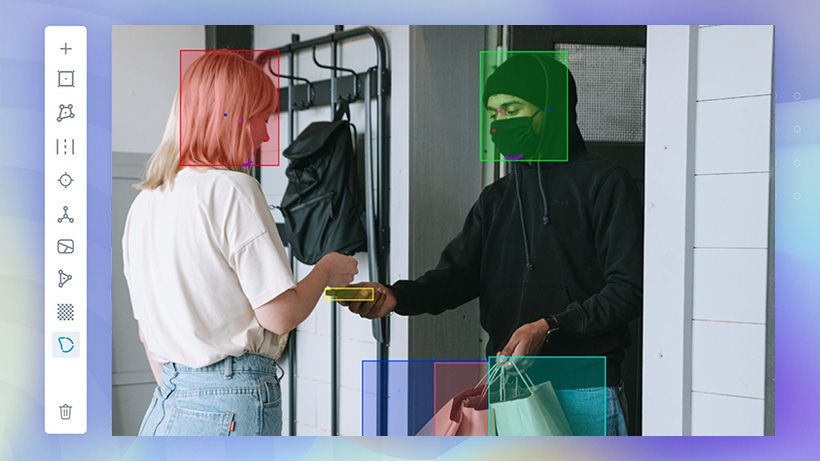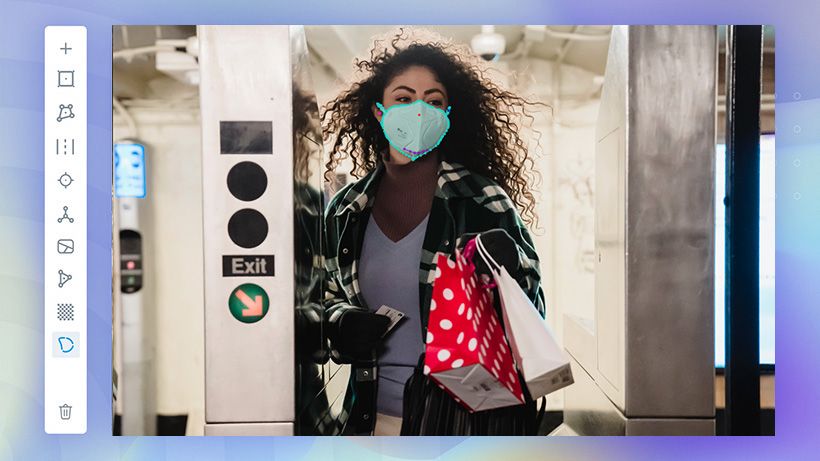Data Annotation Platforms can Help Refine Facial Recognition Models
COVID-19 continues to disrupt everyday life across the globe. More contagious variants of the virus are necessitating ongoing interventions from governments and private companies. Masks are an important component of any COVID mitigation strategy.
This relatively cheap measure can reduce the amount of virus particles that individuals expel. However, masks are difficult for AI developers in object detection missions. Facial recognition AI models can struggle to deal with partially obscured faces, making a range of facial recognition applications less functional.

It is important that the progress of image recognition systems continues in a world of masks. A video or image annotation tool is a vital part of image labeling. Powerful annotation tools can help AI models adjust to changing environments and get quality data and results.
Firstly, this blog will look at some of the important use cases that are made possible with facial recognition capabilities. Secondly we will show how data annotation platforms, like the Keylabs labeling tool, can help create powerful training datasets.
Facial recognition applications
Facial recognition technology is central to applications in a wide range of industries. The ability to identify individuals makes a range of exciting features possible:
- Autonomous vehicles: In-cabin AI is an increasingly important part of the new generation of smart vehicles. In-cabin AI can monitor drivers and recognise when they are falling asleep, acting erratically or are inhibited in some way.
By identifying potentially dangerous behaviours in-cabin AI makes driving safer for everyone. Smart vehicles can also recognise when different individuals are in the car, automatically adjusting settings for each driver.

- Security sector: Facial recognition as a data labeling tool has the potential to transform the security sector. Security staff can use AI powered cameras to identify potentially dangerous individuals or people who have been flagged by law enforcement.
This could make spaces like airports and military bases safer. Facial recognition models can also interpret emotions from the movement of human faces. As a result these machine learning models give security staff warning of developing situations.

- Retail: Facial recognition can help retail organizations to improve the in-store shopping experience for customers. AI models can interpret the customer sentiment towards products. This helps retailers place attractive products where customers can see them.
Facial recognition systems can also be used to reward loyal customers with special deals and personalised product recommendations. Smart checkouts can also make use of facial recognition AI and video annotation tool. By identifying individuals, smart checkouts can help with loss prevention.

The applications detailed above are changing products and industries. However, the prevalence of masks threatens to make these use cases less effective. Computer vision-based AI models need annotated images and videos to learn about the real world during the pre labeling.
As a result images and video for facial recognition training must feature masks, highlighted with accurate computer vision annotation tools. Without this important training data, machine learning algorithms will not function well when presented with masked individuals.
Data annotation tools can help to overcome challenges
AI models must be actively learned with varied image and video data featuring masks. Data annotation platforms can help developers to construct datasets quickly and accurately. The Keylabs tool gives AI innovators access to powerful annotation features including:
- Efficient options: Keylabs is designed to accelerate annotation. It achieves this with the help of features like keyboard shortcuts, quick outlining functions, linear interpolation, and a friendly user interface.
- Annotating videos: Keylabs is designed to make annotating video easier. Interpolation features can track objects from frame to frame in training video. Furthermore Keylabs allows videos to be chopped into sections and given to different annotators. After they have been annotated these sections can be seamlessly recombined.
- Augmented annotation: Finally, an API for realtime statistics allows you to keep track of metrics such as annotation speeds, and number of errors. This enables managers to promote workforce productivity with detailed analytics that show how annotators are spending their time.